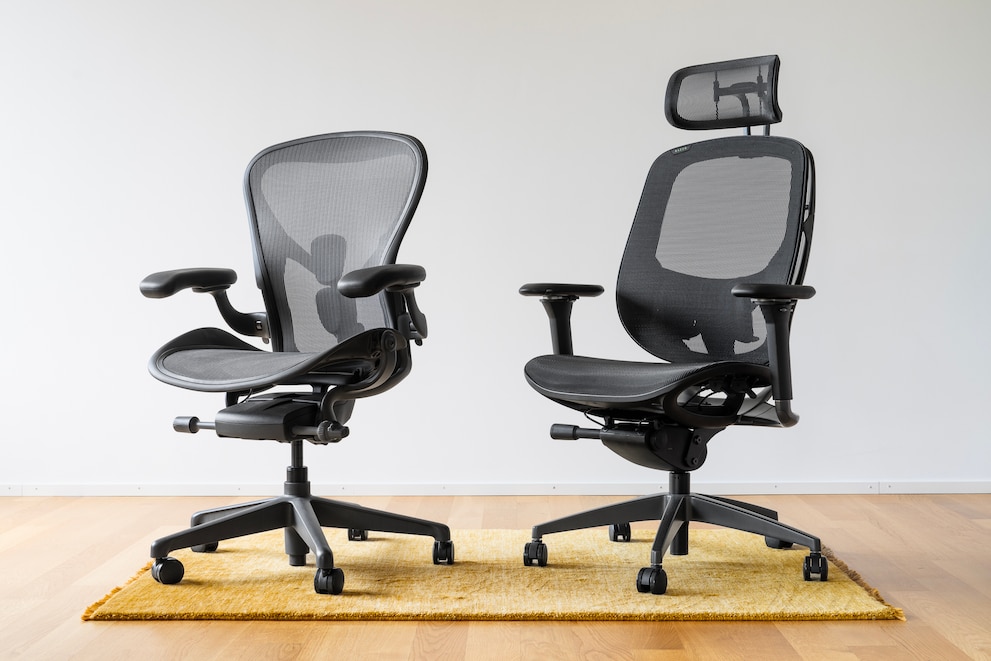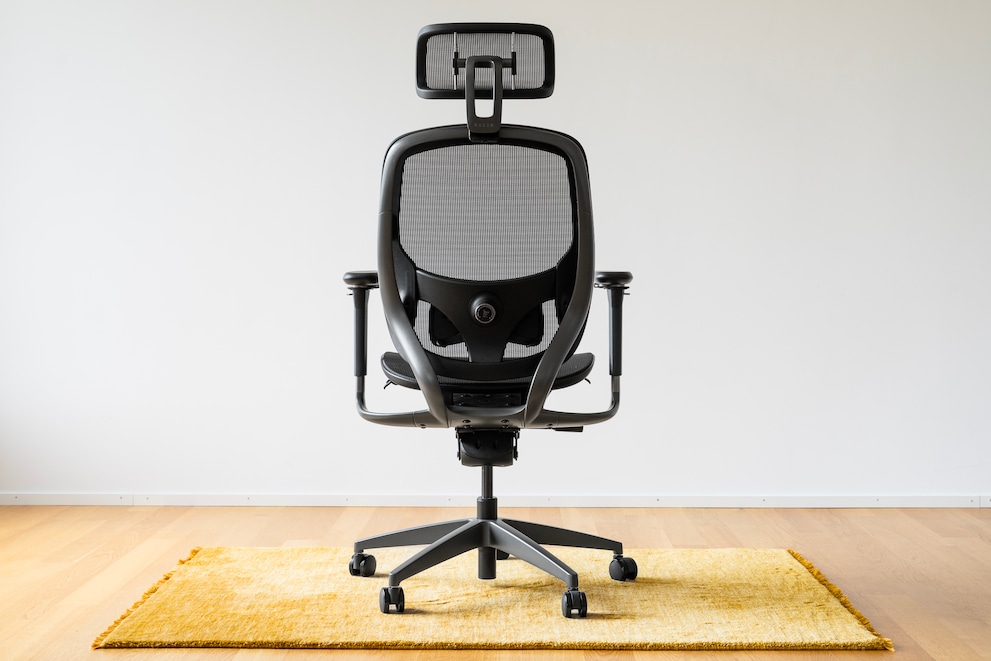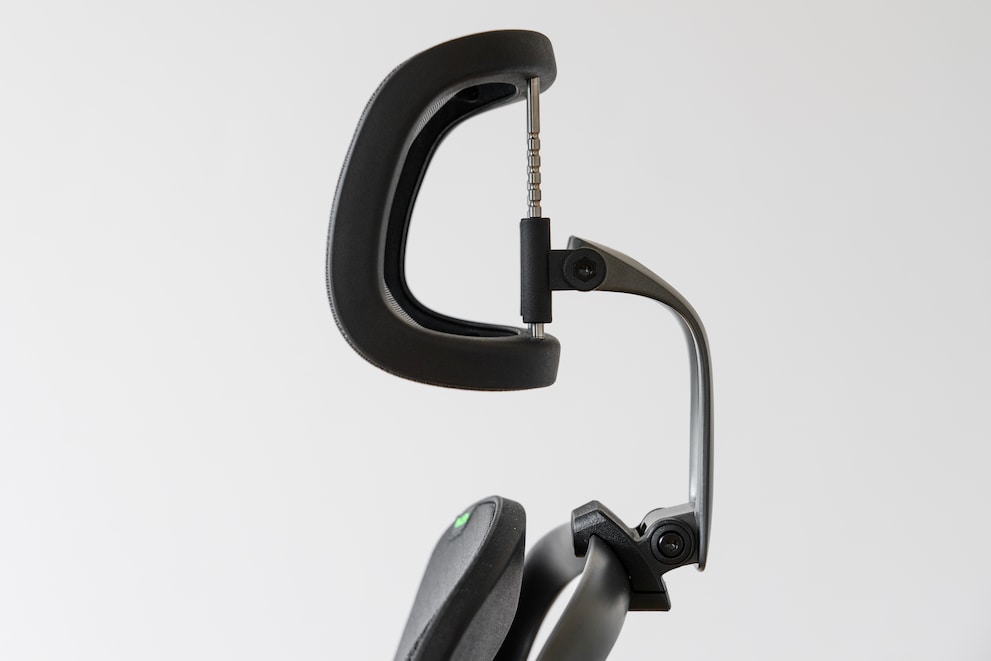
Razer Fujin Pro


Gaming brand Razer has tried its hand at a stylish premium chair. The Fujin Pro is based on the Herman Miller Aeron. While Razer’s imitation prove a good alternative to the icon? My back has its doubts.
The Fujin Pro is Razer’s latest gaming chair. When I hear this term, I traditionally think of chunky leatherette armchairs in a racing car design. I hate them. They’re ugly as hell, usually bad for your back and completely pointless at a desk. I mean, what G-forces are these side pads here supposed to protect me from?
… But I digress.
Fortunately, there’s been a counter-movement among gamers for a few years now. Classic office chairs are more and more prevalent on Twitch and YouTube. Streamers with small budgets sit on something like the Ikea Markus, others can afford a Herman Miller. These models look more professional and are even healthier.
Gaming brands have noticed this trend. Logitech G has its own versions of Herman Miller models Embody and Vantum. Asus also sells an ergonomic chair in the ROG Destrier Ergo. And now Razer is also jumping on the bandwagon. With its mesh design, the Fujin Pro is an obvious frontal attack on the Herman Miller Aeron. A design icon that I sit on myself in everyday life.
The price of the Razer Fujin Pro is also based on high-end office chairs. It costs over 1,000 francs or 1,200 euros – cheaper than its role model, but still expensive. Is it worth the price? I’m testing the Fujin Pro in direct comparison with the Aeron.

The chair comes in individual parts, but with all the necessary tools for assembly. Razer recommends two people for this. With a little skill, you can also do it on your own. When the Fujin Pro is ready in front of me, I’m pleasantly surprised. At first glance, the materials and handiwork make a solid impression.
The base and frame are made of a grey lacquered metal. The seat consists of a plastic frame covered with mesh fabric, and the armrests are covered with imitation leather. They’re the only parts that have some play, the rest of the chair doesn’t wobble. Razer specifies the maximum load capacity as 136 kilogrammes. The castors are only suitable for carpeted floors, they barely work on parquet.

On most chairs, either only the backrest can be tilted backwards, or the backrest and seat are connected at a fixed angle and swing back and forth together. On the Fujin Razer Pro, the seat and backrest are each attached to their own joints – just like the Herman Miller Aeron. This means that when I lean back, the seat tilts slightly backwards, but the backrest tilts more.
I think the chair looks okay, I prefer it over those ugly racing chairs. However, the Fujin Pro doesn’t come close to its inspiration from Herman Miller. The Aeron is in the collection of the Museum of Modern Art for a reason. The Fujin Pro doesn’t look as elegant. Its backrest doesn’t become narrower towards the bottom and the seat isn’t as cupped. The separate bracket, which serves as a suspension for the armrests, also ensures a more powerful overall appearance.

The Fujin Pro can be customised in every possible way. Its levers and buttons are all sensibly positioned and labelled. Here are all the adustable elements:

Unlike its Herman Miller inspiration, the Razer Fujin Pro only comes in a fairly large size. Its dimensions are similar to Aeron version C – the largest version. The seat depth fits me quite well at 186 cm in height, although I do push the seat all the way back. I suspect that people under 175 cm won’t have thighs large enough for the chair.
The seat isn’t only deep, but wide too. This also means that the armrests are far apart. They can be pushed and turned slightly to the left and right. But even in the tightest position, it’s still too wide for me, a beanpole.
The mechanism of the lumbar support is much worse. I can adjust both height and strength, an exemplary feature, but this doesn’t last. If I turn the cushions forward and press firmly against them once with my back, I hear a «clack-clack-clack» and the lumbar support is back in its softest position. The mechanism’s resistance is way too low.

The headrest is even more prone to faults. It can be adjusted in three ways. You don’t have to press a button to do this. Instead, a bit of force is required. However, precisely this quickly becomes the mechanism’s downfall. After just two weeks, it no longer clicks into place. Other users report the same problem.
Once I’ve correctly adjusted the Fujin Pro, I find it very comfortable for short periods of time. The mesh fabric is breathable and taut, but not too hard. Razer has also padded the front edge of the seat with a cushion under the mesh. As a result, there are no pressure points. True, my size B Aeron offers more freedom of movement as a chair. There, my back has slightly more support when I sit in the correct position at the very back of the chair.

This leads me to the biggest problem with the Razer Fujin Pro. After a while, like clockwork, I get back pain. Three reasons for why this could be:

As every back is different, my bad experience won’t necessarily apply to everyone. If your back needs little support, you may have no problem with the Fujin Pro.
I think the rocking mechanism with its two separate joints for the backrest and seat is just as good as on the Herman Miller Aeron. When I lean back, the angle between my legs and back increases slightly – but not so much that I slide forwards out of the seat. The good adhesive quality of the mesh fabric also contributes to this. But Herman Miller does other things better than Razer. Namely, the Aeron can limit the rocking function, but I can still swing back and forth between these limits. With the Fujin Pro, the backrest can only be completely fixed in four predefined positions.

However, the Fujin Pro’s headrest does trump the Aeron. It’s an added comfort when I lean back to watch a YouTube video. However, this rarely happens, and a headrest is unnecessary in an upright position. In addition, I have to constantly readjust it because of the defective mechanism. It annoys me so much that I eventually decide to dismantle it completely.
Razer really puts its foot in it when it comes to the warranty. Normally, material failure in premium chairs is covered for a very long time. A few examples:
And the Razer Fujin Pro? 5 years on the frame, mechanism and armrests in the EU – and only 1 year on the mesh cover.
One single year! This warranty is unacceptable for a chair costing 1,000 francs. According to Razer, the legal minimum period of two years also applies to the mesh fabric in Switzerland. But even that seems ridiculous compared to other manufacturers. Their stinginess is a mystery to me, the mesh looks just as stable as with other manufacturers. Either Razer knows that it’ll wear out quickly, or the short warranty period is just stupid. It creates mistrust, although few actual cases would be expected anyway.

Razer gets a lot right with its first foray into the world of mesh chairs. The Fujin Pro looks sensible, has an ergonomic shape and can be flexibly adjusted. The rocking function with two joints works well, I sit comfortably for short periods of time. There’s nothing wrong with the materials used, and the handiwork is also impeccable in most areas.
But only most. The adjustment mechanisms for the headrest and lumbar support are both prone to errors. This isn’t so tragic for the relatively unimportant headrest. But the lumbar support, which just can’t stay in position, doesn’t work at all. Even when it does hold, its butterfly shape supports the kidneys rather than the spine. If I sit on the chair for too long, I get back pain.
Razer’s meagre warranty is similarly unforgivable. Two years (only one in the EU) on the mesh fabric isn’t long enough. All in all, the Fujin Pro falls well behind its obvious role model. Yes, the Herman Miller Aeron costs more, but it feels well developed and comes with a twelve-year warranty. Razer’s imitation could’ve worked, but fails in important areas. A miss is as good as a mile when it comes to premium chairs.
Pro
Contra


My fingerprint often changes so drastically that my MacBook doesn't recognise it anymore. The reason? If I'm not clinging to a monitor or camera, I'm probably clinging to a rockface by the tips of my fingers.